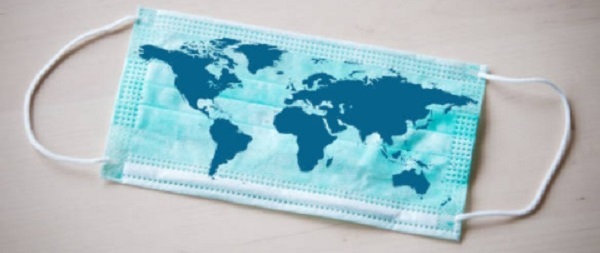Jan 08, 2026
Jan 08, 2026
Fate of human civilization is under a cloud. We are witness to a historic phase.in the existence of Human civilization. The silver lining is the knowledge that mankind has survived many crises in its long history. It is not the first time that disaster has tested human ingenuity and resilience. It is so reassuring.
Pandemic, Epidemic and Infection together with Virus, Corona 19, Covid-19 and most importantly vaccine have become the most prominent words in our lexicon these days.

Let us begin with getting introduced with these words. Epidemic is pandemic if it is spread across multiple countries at the same time. Epidemics are induced by widespread Infection Infectious diseases are caused by microscopic germs (such as bacteria or viruses) that get into the body and cause problems. Some — but not all — infectious diseases spread directly from one person to another. Infectious diseases that spread from person to person are said to be contagious. Diseases causing agents are referred to as Pathogens.
A Virus is a curious existence. It is a particle when left to itself. It is an organism when it is inside a living cell. It has genetic material, but lacks a metabolic system. It takes over the metabolic system of its host and replicates (as a living organism does).
There is a close connection between viruses and humans. Experts believe that about half of all human DNA originated from viruses that infected and embedded their nucleic acid in our ancestors' egg and sperm cells. Microbes occupy all of our body surfaces, including the skin, gut, and mucous membranes.
IMMUNITY-- A living cell is an improbable phenomenon; such a delicate but stable system which is designed to exist, function and perpetuate in a hostile environment. It is subject to attack by incompatible foreign bodies. The cell has an inbuilt defence system in place which protects it from such eventualities.This system is known as Immune system Our immune system is essential for our survival. Without an immune system, our bodies would be open to attack from bacteria, viruses, parasites, and more. It is our immune system that keeps us healthy as we drift through a sea of pathogens.
Vaccination equips a person with immunity against a specific infection. is a simple, safe, and effective way of protecting people against harmful diseases, before you come into contact with them. It uses your body’s natural defenses to build resistance to specific infections and makes your immune system stronger.
Vaccines train your immune system to create antibodies, just as it does when it’s exposed to a disease. However, because vaccines contain only killed or weakened forms of germs like viruses or bacteria, they do not cause the disease or put you at risk of its complications.
Most vaccines are given by an injection, but some are given orally (by mouth) or sprayed into the nose.
COVID-19 is an acronym - 'CO' stands for corona, 'VI' for virus, and 'D' for disease. Formerly, this disease was referred to as '2019 novel coronavirus' or '2019-nCoV.' The COVID-19 virus is a new virus linked to the same family of viruses as Severe Acute Respiratory Syndrome (SARS) and some types of common cold.
We learn from history that man has been facing and overcoming pandemics as well as epidemics in his eventful and momentous rise to modern times.
Most of today’s leading infectious diseases and parasites of mankind could not become established until after the transition to agriculture.Taking to agriculture made primitive man to stay limited around their fields and live in dense populations. Foundation of social formations such as family,community and societies were laid. Living in close contact made it possible to transmit pathogens from person to person. So it is not incorrect to say that the history of infectious diseases is closely linked with the history of human civilization.
But human ingenuity and resilience has been active side by side. Scientific studies identified the pathogens Germ theory, in medicine,is the theory that certain diseases are caused by the invasion of the body by microorganisms, organisms too small to be seen except through a microscope
Discovery of penicillin by, Alexander Fleming led to the introduction of antibiotics that greatly reduced the number of deaths from infection.
Streptomycin was discovered by American biochemists Selman Waksman, Albert Schatz, and Elizabeth Bugie in 1943. The drug acts by interfering with the ability of a microorganism to synthesize certain vital proteins.
Antibiotics are effective for stopping the reproduction process of bacteria and do not have any effect on viruses. Antibiotics have curative effects against bacterial infection while vaccines are right to be used for protection against potential future infection. Vaccines are designed to induce a protective immune response in your body.
My earliest encounter with the epidemic was in the forties decade of last century. India was a colony of Great Britain. The Freedom movement was in full swing. Second world war was in a decisive stage. There was illiteracy, poverty and superstition. Side by side there were reformist movements, There were deadly diseases such as tuberculosis, leprosy cholera, small pox among others. Reach to medical facilities and awareness was very poor. Added to this scenario was the shadow of the great famine of Bengal. Woes of the epidemic were compounded due to prevailing political and social turmoil. People felt helpless. A large section of the population considered epidemics as divine curse and the will of God.
Since then several waves of infections have arisen. Each of which seemed to be unstoppable and threatening. But each drew a robust and matching response from the human spirit. Antibiotics and vaccines are being developed and the threat recedes
Now with increased awareness people are getting freed from superstitions and generally heed to scientific guidelines.
01-May-2021
More by : Ganganand Jha